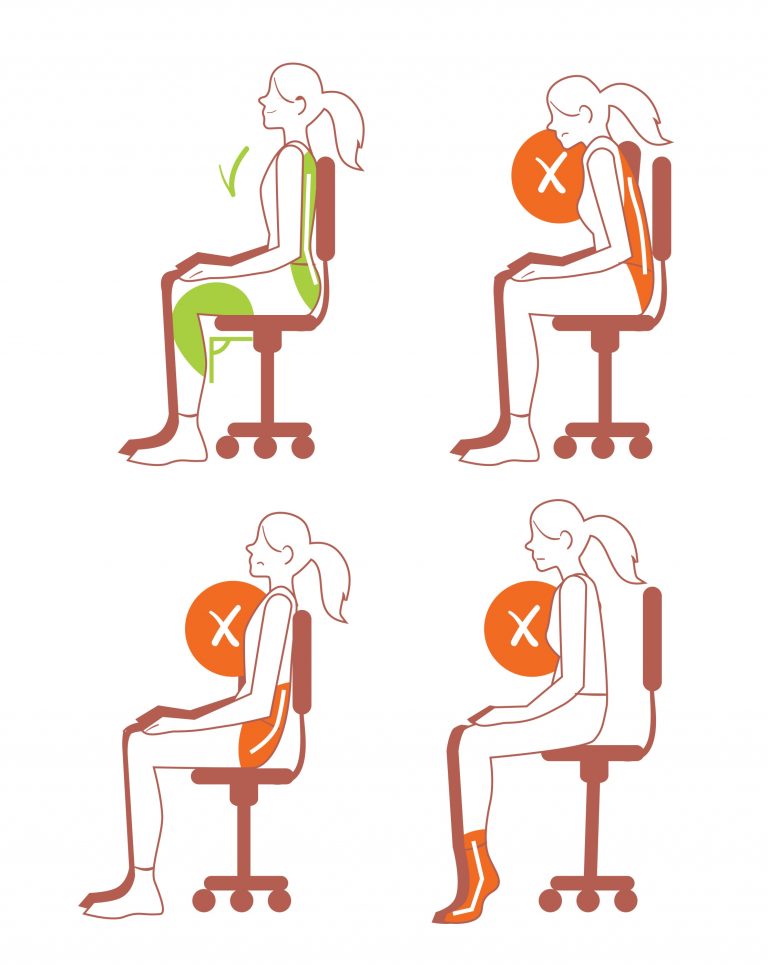
Contact with us

On average, people spend 8 hours a day sitting. From working at a desk, driving to and from work, having dinner, and watching TV in the evenings, we do a lot of sitting. The followings are some useful hints to take to protect our bodies.
workstation set up is important especially for people who work full time with the computer. The followings are some useful tips to help you understand better:
It is beneficial to do some stretching exercises while you are on break. Ask your physiotherapist for suitable stretching exercises.
Note: You can put a small sticky note on your monitor reminding yourself to “sit nice and tall”
Remember: “Ears over shoulders over hips”
Seat height:
Seat position
The tilt of the seat:
Note: you can use a lumbar cushion to keep your lower back arched.
Adjusting car Mirrors
Remember: It does take work and dedication, but you will feel a huge difference inside and out as you work to make the proper posture a natural state of being.
Note: do not stand still for a long time.
Note: Rest one foot on a stool or low box to ease pressure on your lower back especially if you must stand for a long time, switch feet often.

Contact with us